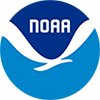Program adopted by the International Polar Conference
St. Petersburg , August 1881 †
a. Beginning and Ending of the Observations
1. The international Polar stations are to begin their observations as soon as possible after August 1, 1882 , and end them as late as possible before September 1, 1883 .
b. Times of Observation
2. The hourly [meteorological] observations may be made according to any time.
c. Order of the Observations
3. The expeditions are free to choose the order of their observations as they think fit.
c. Meteorological Observations
4. Air Temperature. The mercurial thermometers should be read to 0.1°C, the spirit thermometers to at least 0.5°C.
5. The thermometers should be verified at the Central Meteorological Offices, and the spirit thermometers besides are to be compared with a mercurial thermometer at the place of observation at as low temperature as possible. The zero point of all thermometers used in the observations is to be determined afresh from time to time.
6. The thermometers are to be placed at a height of at least 1½ to 2 meters above the ground, in a screen like that given by Wild, and which will secure that, without excessive interference with the free circulation of the air about them, they will be sheltered from all disturbing influences of radiation.
7. The minimum thermometer for the determination of air temperature must be placed under the same conditions as other thermometers.
8. The temperature of the sea on the surface and at the depth of every 10 meters is to be observed wherever possible. The following are suggested as useful instruments for this purpose: sluggish thermometers by Eckmann, Negretti and Zambra, Miller-Casella, etc.
9. Pressure. Every station must have at least one standard mercurial barometer and a good observing mercurial barometer, besides reserve barometers and aneroids.
10. The barometers must be verified by a Central Meteorological Office, and the observing barometer must be compared at least once every week with the standard barometer.
11. Humidity. The psychrometer and the hair hygrometer are to be used, but at low temperatures they must be compared as often as possible with instruments for direct observation.
12. Wind. The Vane and Robinson’s anemometer should be arranged to be read off inside the observatory (vide the arrangement of the Swedish instruments at Spitzbergen). The direction of the wind is to be given for every 16 points and according to true bearings. Its velocity should always be given according to Robinson’s anemometer, and also estimated on Beaufort’s scale. As a reserve instrument for measuring the wind force, in case of injury to Robinson’s nemometer, Hagemann’s anemometer is recommended as being simple in management and very strong.
13. Clouds. Form, amount, and direction of motion at various heights, are to be observed to 16 points.
14. Rainfall, etc. Occurrence and duration of rain, snow, Graupel (soft hail) are to be noted, and when possible, the amount.
15. Weather. Thunderstorms, hail, fog, hoar-frost, and optical phenomena are also to be noted.
† Since the United States expeditions to Point Barrow and Lady Franklin Bay were in the field prior to the close of the St. Petersburg conference, they followed the instructions adopted by the earlier Hamburg conference of 1879, which differed slightly in some points not relevant here. The major difference between the U.S. expeditions and the others was that English rather than metric units of measurement were used.
|

